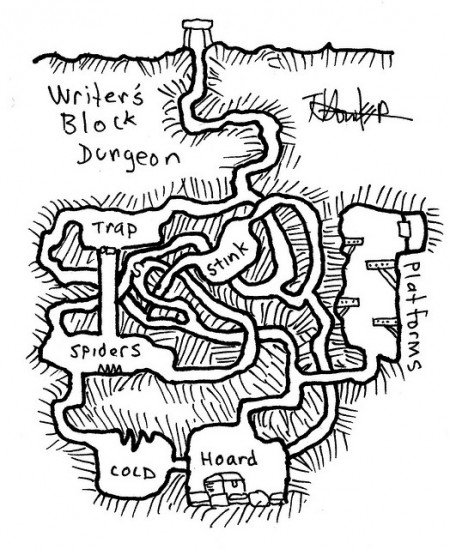Your novel is progressing nicely and you finish a chapter. But then, the next chapter is calling and you procrastinate, you read blogs, you do laundry, you AVOID.
How can you get started on that next chapter?
 Sensory details. I like to imagine where my character is in the next chapter, then close my eyes, put myself there and try to imagine all the things the character might see, hear, touch, taste or smell. Then, I push hard to find an interesting detail and I start writing there. The danger is that you might start with too much description. That’s OK, you can take care of that during revision. The goal here is to get started.
Sensory details. I like to imagine where my character is in the next chapter, then close my eyes, put myself there and try to imagine all the things the character might see, hear, touch, taste or smell. Then, I push hard to find an interesting detail and I start writing there. The danger is that you might start with too much description. That’s OK, you can take care of that during revision. The goal here is to get started.
Action. Alternately, starting with a great verb can help jumpstart the story. Think beyond the usual: walk, run, turn head, whirl. Instead, go for something distinctive: salute, pirouette, regurgitate. (Please, avoid those pesky adverbs, which add so little. Not walked lazily. But strolled.) Get your character in motion and keep him/her in motion for a page or so, and you’ll figure out where to go next.
Dialogue. One of my favorite openings to a novel is Tom Sawyer, which opens with his aunt calling: “Tom!”
When in doubt, begin a new chapter with a bit of dialogue. Keep it going for about ten exchanges and then move on.
Dead End Ways to Start a Chapter
On the other hand, there are some dead-end ways to start chapters:
Waking up. Rarely does it work to have a character start a chapter in bed, then wake up. Boring. (OK. Prove me wrong! As long as it gets you going on a new chapter.)
Backstory. Long explanations of a character’s history rarely excite the reader either. We don’t need to know about Mary’s uncle’s horse and how it escaped and caused Mary to jump into a ditch where she broke her leg. Instead, show-don’t-tell how she is dealing with that broken leg. Past action is boring; current action is exciting.
Dull vocabulary. If there’s ever a place for brilliance of voice, phrasing, interesting vocabulary, it’s the opening of a chapter. Here is where you want to catch a reader’s attention. No, you don’t want it to be so overblown that it is out of character with the rest of the story; however, you do want it to catch a reader. And, the beauty is that if you do overwrite, it’s just a first draft.
These are ideas to help you get something—anything—on paper. There’s plenty of time for revision. But that first draft has to get written, one chapter at a time. Stop procrastinating. Write!
I’ve been struggling with exactly this problem. I came up with this http://authorwannabe.com/?p=207 to help me resurge my excitement about writing in general but the tips you provide are so well targeted to the problems that stump starting a new chapter. I’m looking forwarded to trying these and I’m sure I’ll have the opportunity as soon as I finish the chapter I’m currently on. Thanks for the post Darcy!
About starting a chapter with dialogue… I’m okay with it as a reader and as an author. But,I ran into a problem when I decided to format my book for Create Space and wanted to use drop caps. Drop caps and quotation marks do not like each other. Tossing this out just in case you ever need to know. :o)
Interesting that you can’t use drop caps and quotation marks together. I guess–you would just use the drop cap and a closing quotation mark? Still, a formatting problem isn’t a good enough reason for me to disregard one strategy for opening a story.
Darcy